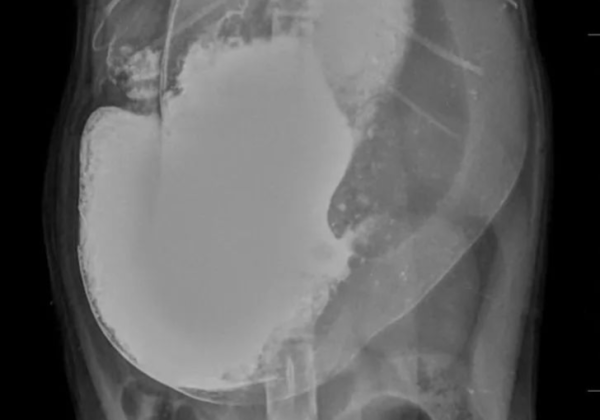Dog raising affects fertility What are the dangers of congenital Toxoplasma infection to the fetus
Raising a dog affects fertility. Many older parents say that it is not good for girls to raise dogs because it may lead to symptoms such as infertility, miscarriage, and child deformity. But is this problem really caused by raising a dog? If so, why does this cause? Why does it matter if some girls raise dogs? Is it true that raising a dog affects pregnancy? Is it true that people exaggerate or is it true?

Seriously speaking, raising a dog may have many problems. For example, if you do not pay attention to hygiene, you can grow lice, jump pruritus and other parasites. Close contact can lead to corresponding skin diseases on the human body, and the fallen hair of the dog can also cause allergies to some people. But the most related to fertility and the most controversial one is the infection of toxoplasma gondii related to raising dogs! In 1997, an article in the Chinese Journal of Behavioral Sciences conducted a correlation analysis on infections and habitual miscarriages of cats, dogs, toxoplasma gondii, and habitual miscarriages. The results show that the infection rate of Toxoplasma gondii in women with the appetite for raising cats and dogs is as high as 6 times higher than that of those without hobbies (but the limitation of this article is that cats and dogs are not separated).
1. What is toxoplasmosis? - [Zoonocortosis, about 40% of adults in the world are infected with toxoplasma gondii]
Toxoplasma gondii is an infection caused by a parasitic toxoplasma. Toxoplasma infections are very common around the world. Among the adults in the United States and Britain, about 16 to 40% have been infected, and some have been investigated to 70%, while 50 to 80% of adults in the European continent and Latin America have been infected, and as high as 90% of the French. From 1985 to 1990, most of the surveys in 23 provinces, cities and autonomous regions in my country were below 10%, which was significantly lower than those in foreign countries.
Most normal people are infected with Toxoplasma gondii, or the symptoms are very mild. I don’t know when they were infected. Only a few people have fever, lymph node swollen, headache, muscle and joint pain when they are first infected (or primary infection). After a few days or weeks, as the body develops immunity, the symptoms are small, but the cyst formed is in the body for several months, years or longer, and generally heals itself. However, if patients with severe immunodeficiency, such as AIDS patients, the consequences will be very serious if they become infected. Infection in pregnant women can be transmitted to the fetus and may also have serious consequences.
2. How is Toxoplasma contagious? - [There are many ways, but not many contagious people with dogs]
First of all, eating undercooked meat, especially pigs and sheep. Almost all mammals and birds, such as rats, pigs, sheep, cattle, rabbits, chickens, ducks, gooses, etc., can infect Toxoplasma gondii, and the infection rate is very high. The source of human infection mainly comes from the meat of these animals. For example, the temperature of shabu-shabu is not enough and the time is too short. If Toxoplasma gondii is not killed, it is at risk of infection. Contamination of raw meat or chopping boards can also be contagious. Polluted sheep and milk can also be contagious. The above-mentioned Toxoplasma infection rate in my country's population is low, which may be related to the Chinese habit of eating meat.
Dogs can also be infected with Toxoplasma gondii, but their feces and excrements are not contagious, and if they do not eat dog meat, they will not be contagious. Some people say that "dogs are close to humans and are one of the important sources of infection for humans." Some people also blame the raising of dogs at home if they have "ironality, congenital heart disease or one more finger". These are all unfounded.

infected cat feces are an important source of infection. Cats and felines are the final hosts of Toxoplasma gondii. The infected cats are excreted from their feces, which usually lasts for 1 week to 20 days, and are rarely longer; this period is the infection period. About 1% of cat feces surveyed around the world contain Toxoplasma gondii cysts. The cyst zygote in cat feces must develop in the outside world for 2 to 5 days before it becomes contagious, so it is very important to deal with cat feces. The cyst zygote can survive in water and moist soil for several months or longer, so food, drinking water, and even dust contaminated by cat feces can be contagious if people eat it. In areas with fully cooked carnivores, felines are an important source of infection for humans. However, many other animals that are intermediate hosts can also spread. For example, there are very few cats in many pastures, and many cattle and sheep are infected; and there are still some islands in the world without cats, and the infection rate of the island residents is still very high. Therefore, there is an important book in China called "Human Parasitology" that says: Because the infection rate of livestock as intermediate hosts is very high, in terms of human infection sources, it is important to contaminate cat feces without eating uncooked meat.
Infection of Toxoplasma gondii in pregnant women can be transmitted to the fetus, and congenital infection occurs. Since congenital infection of the fetus may have serious consequences, it is very important. However, only pregnant women who have not been infected with Toxoplasma gondii before pregnancy can have primary (primary) infection during pregnancy can be transmitted to the fetus. If the pregnant woman has been infected with Toxoplasma before pregnancy, she will no longer be at risk of infection.
3. What are the dangers of congenital Toxoplasma infection to the fetus? - [Pregnant women have a great impact on the infection of Toxoplasma, just in case, try to avoid contact before and after pregnancy]
If congenital infection occurs in the first 3 months of pregnancy, about 40% of the fetus may have serious damage, miscarriage, stillbirth or neonatal diseases, or lesions or deformities of the eyes, brain or liver after birth, such as retinal choroiditis, cataracts, intracerebral calcification, hydrocephalus, microcephaly, intellectual disability, jaundice and hepatosplenomegaly. Infections occur in the last 3 months of pregnancy, less than 3% of the severe cases.
In 1996, a study on the effects of toxoplasma gondii on the fetus at the University Hospital of Helsinki, Finland found that among the 16,733 pregnant women who performed serum antibody examinations, only 42 were primary infections, of which 36 were treated with spiromycin. After long-term follow-up, their children had 4 congenital toxoplasmosis, 2 had severe neurological lesions, and 2 had no clinical symptoms. The remaining children born to pregnant women with primary infection are no different from those of other pregnant women in terms of growth, development and intelligence..
Prevent toxoplasma infection: Take good care of pets to prevent contamination of water sources, do not drink raw water, do not eat undercooked meat, do not mix knives and cutting boards for raw and cooked foods, do not play with cats, dogs and other animals, and try to avoid contact with these pets before and after pregnancy.















